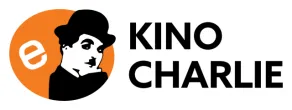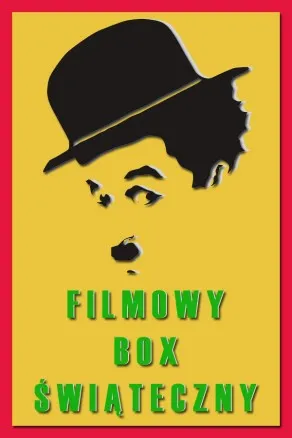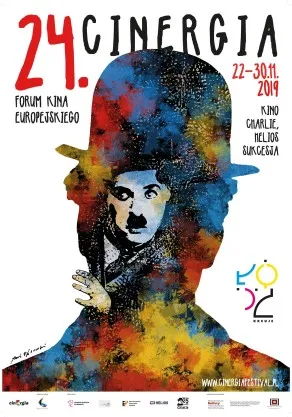
STRONA GŁÓWNA
/
REPERTUAR
/
ZAPOWIEDZI
/
WYDARZENIA
/
FESTIWALE
/
KINO
/
CENY BILETÓW
/
KONTAKT
FOTORELACJE
/
ZŁOTY GLAN
/
DLA SZKÓŁ
/
CHARLIE OUTSIDE
/
OPEN CINEMA
/
SKLEP
/
POLITYKA RODO
|
MEXICO FANTASTICO - MEKSYKAŃSKIE KINO S-F LAT 50-60-70 3-6 czerwca 2005 r., kino Charlie  Wstęp
Plakat
Program
Opisy filmów
Kicz Party w klubie Jazzga
Wstęp
Plakat
Program
Opisy filmów
Kicz Party w klubie Jazzga Film Synopsis
Poster
The Future South of the Border
Film Synopsis
Poster
The Future South of the Border...Closer than Hollywood, Cooler, More Mexican Hollywood made hundreds of science-fiction movies over the twentieth century. In fantasies about the future, space, robots and aliens, the industry of make-believe fostered the idolization of progress, the consumption of technology and a paranoia about the other in the collective imagination. Generation after generation, the same plots were repeated and reformulated in accordance with scientific breakthroughs, fashions and political changes. In these films, the improbable intrudes upon everyday life: an alien finally makes first contact, or a madman at the Pentagon pushes the doomsday buttontomorrow has come. The most oddball adventures take place inside spaceships equipped with all the necessary staples for an intergalactic picnic. They often also feature a half-crazed scientist with a laboratory full of pickled brains, teleporting devices and virtual-sex machines. The beautiful girl is either a sweet damsel in distress or her antithesis: a voluptuous invader from Venus with fearsome powers of seduction. The hero, an Apollinian embodiment of the establishment, struggles for good... but who's good is it? And the abject nature of the 'other' serves as justification for Western Civilization's destructive, hegemonic ambitions. In these movies, the United States, in its own right, always represents humanity as a whole: if aliens attack the planet they will take aim at American cities rather than Mexico City or Tegucigalpa, and if anyone has to conquer the universe, it will be them. Conversely, Mexican cinema's main commitment has been to aid in the construction of a national identity based on traditional values: the idyllic world of indigenous communities, picturesque provincial towns, the cantina and its mariachis and, of course, the Revolution, never praised highly enough. The recipe's ingredients were precisely measured. In New York's 1939 World Fair, the US presented a Tomorrow Land funded by General Motors and Westinghouse where dioramas and automatons showed new technologies that could be incorporated into everyday life, promoting the use of automobiles and household appliances as a universal condition of any society that claimed to be modern. On the other hand, Mexico's participation was marginal; a small pavilion exhibited pre-Hispanic pieces and folk dances were staged featuring colorful regional attire. In the face of other nations' grand displays, all Mexico could offer was its exoticism; progress, technology and the future had become Yankee patents. But who does not have kooky childhood memories of Santo, our heroic wrestler, saving us from a Martian conspiracy? Or of Clavillazo, one of our most famous comics, accidentally conquering the Moon? What would happen if extraterrestrials landed in Mexico instead of the US? How would we Mexicans face alien invaders? Could a Mexican scientist be the inventor of the rocket-ship? Is it realistic for a Mexican astronaut to set foot on the Moon and claim it in the name of our nation? Could a local boxer disarm a nuclear bomb? As the first Mexican science-fiction film festival, The Future South of the Border, will show, we Mexicans may be capable of anything... except living without tacos or refried beans. After the 'Golden Age' of Mexican cinema came to an end, the industry nevertheless experienced a hitherto unseen boom when it realized that films where the working-class could identify with the characters could be hugely profitable. It fell prey to certain bad habits in terms of production, churning out box-office successes made on tiny budgets where spectators' imaginations had to make up for on-screen deficiencies. This is how three key genres featuring wrestlers, comedians or screen sirens (ranging from cabaret stars to ficheras: women who hired themselves out at clubs as dance partners, and occasionally as prostitutes)served as gateways for science fiction into Mexican cinema. Mexicans were more interested in seeing their favorite public personae on screen than in possible futures, and these movies were a pretext to recontextualize them out of their traditional stage setting. Cardboard backdrops, recycled sets, spaceships attached to fishing wire, a zipper on the monster's costume, a chemistry lab that looked like a of children's toy set: all of this lends these movies a very peculiar aesthetic which, in retrospect, sparks a kind of fascination. The Future South of the Border is the result of a research project aimed at recovering and documenting Mexican films made between 1945 and 1980 that dealt with science-fiction and adapted the topic to our environment and idiosyncrasies. While American productions mean businesstheir plots following the sober logic of the scientifically deft, technology-wielding conquerorMexican adventures seem carefree and amusing, practically a child's game, full of silly scenes which could be seen as involuntarily (?) mocking our northern neighbors' pretensionsa parodic syncretism resulting from the ridiculous supposition that Mexico might some day be at the cutting edge of technology. Because of their references, these films imply a second reading of cinema within cinema, and contain a strange equation of imaginaries denoting how we have absorbed foreign icons without losing our own identity. In The Future South of the Border, we will see, in a single film, how a robot may strike up a conversation with a tough northern Mexican rancher, that cabaret entertainers are actually from another galaxy, and that spaceships also fly over the canals of Xochimilco.
Itala Schmelz
Vania Rojas Héctor Orozco |
Repertuar
19.04 - piątek
Wydarzenia
19 kwietnia 19:30 12 - 18 kwietnia 2024 r. 21 - 27 kwietnia 2024 r. 10 - 19 maja 2024 r. Kino
|
Kupujesz bilet online? Możesz okazać go na telefonie, przed wejściem na salę




www.OpenCinema.pl
Zapraszamy do współpracy przy
organizacji kina letniego
organizacji kina letniego



Copyright 2024 © Kino Charlie - Wszelkie prawa zastrzeżone
/
Polityka RODO
/
Polityka Cookies












